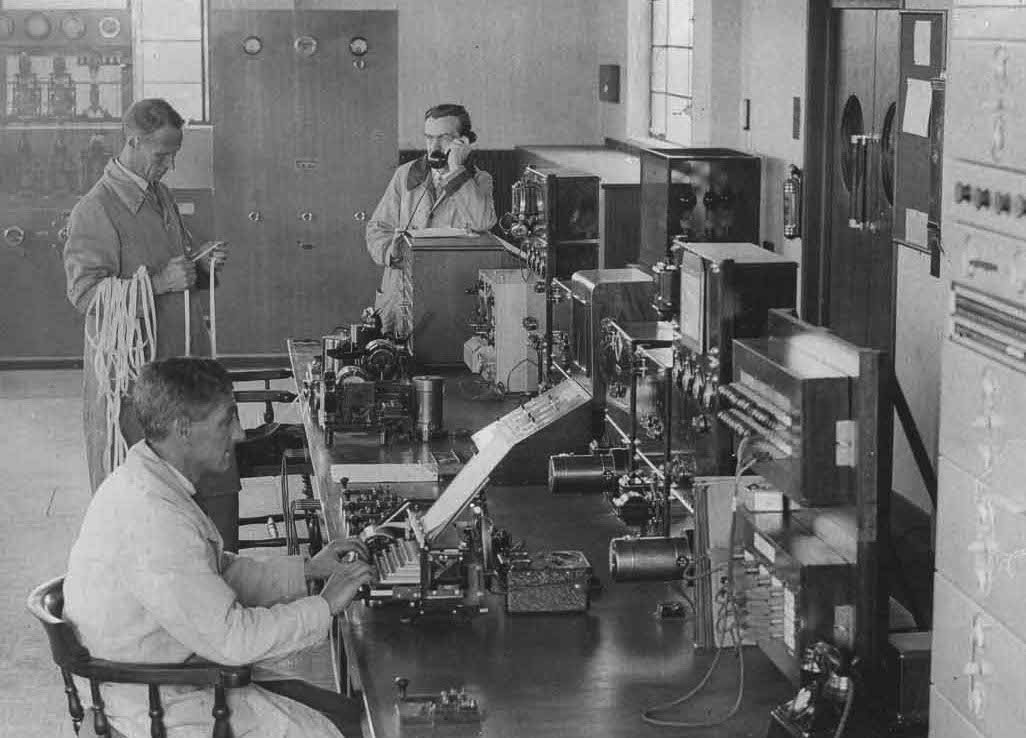SUPERCOVERSATIONS DAY 59: TOM MCGLYNN RESPONDS TO SOPHIA AL-MARIA, “TBH IDK FTW”
#You Might As Well Live
London Police Department, Radio & Telegraph Room
The death drive is no longer an optionable detour on the unexitable wide highway of our hyper-parsed present. Metamodernism and its apparatus trap the world in amber chambers: partitions of the real. Zeno’s paradox of never arriving across the street of incremental dreams to a corner of the actual has taken on the affect of the real: a pedestrian infinity. We have unearthed the arche-fossil of the writing dead and it is us. Dorothy Parker’s gesture of hanging a cadaver image in her place of work, Vogue, a media company that reifies cultural representation, is akin to Bartleby’s occupational strike, yet today, intentionally or unintentionally, IDK, the mis-sent letters all get delivered, dead on arrival. It’s a postal conspiracy on the highest level of farce, an endless crying of lot 49. FTW indeed!
Parker’s gesture produced the desired effect to get her fired from a job she hated because of it’s false pretense to represent a world ever so slightly touched by the perennially- real news of the world, i.e. genocide, famine, war. The significant -slippage which with the information was received, somewhat delayed, “on the wire” in those primordial days of the medial ooze allowed Parker a potential place to go, down the elevator and out the door into the “reality” of the New York streets of 1915. In Parker’s day it may have still seemed as if one could simply walk away from the technology of mass-produced memory in order to retain a semblance of one’s own conscience.
Technics, as Bernard Stiegler has said, are “the default of the living human being”1. The tools with which we construct our worlds come into being, become incarnate, from a point of non-being that doesn’t necessarily start out as a transcendental “nothingness” but is the point where what Stiegler terms ‘individuation’ begins its human but also, potentially, non-human processes of coming into being. Stiegler ultimately sees the relationship between the psychic, the technical and the social as a “general organology” In his world there is no walking away from the technologically augmented since it is all of a piece with what it means to actualize “being” in the world. No doubt Parker would have a sharp response to such cybernetic theoretic perhaps something like, “ It just came over the wire, but this was just in, under the desk” celebrating a sensual, embodied consciousness over any number of thin, dead, lines.
Sophia Al-Maria wonders if the news on the wire in 1915, the year in which she chooses to weave together her metamodern narrative, are “primordial tweets”. The twitterverse of now offers a vision of heteronymous historicity that is more compelling than the need to announce a subjective authority over the Internet of things. Stiegler attaches this phenomenon to Platonic origins: “Platonic theory is the pre-condition of cybernetics. In reality, if one looks closely, it depends on which of Plato’s dialogues you’re looking at; but with respect to ‘The Sophist’, Theaetetus, etc., Plato constructs a propositional theory of the logos: he says everything is in the proposition. And that is the condition moving through Leibniz to the development of cybernetics. This means that what Plato works out against heteronomy - because his is obviously a discourse against heteronomy - will construct a hyper-heteronomy, since cybernetics is a hyper-heteronomy”[2]. In her piece, Al-Maria reverse engineers this hyper-heteronymy into an ad hoc sketch of a possible autonomous zone of historical awareness. She pieces together aspects of the Armenian genocide of 1915 through a contemporary avatar of the hyper-mediated uncanny, Kim Kardashian, whose surname can be traced back to Armenian roots. Her name translated means “stone-carver”, written in stone as it were, “as if.” Al-Maria then code-switches into specifio-subjective autobiographical mode in relating her trip to the present day Armenian region, specifically the self-declared breakaway republic of Nagorno-Karabakh, within Azerbaijan. There she dialogues with an (online) friend who eschews the fluid interconnectivity of the internet, even though she herself works in tech. Al-Maria ‘s narrative then drifts in tweet –like tourism from one disembodied vignette to another in the city of Baku, in Azerbaijan. She arcs from postmodern architecture to the persistence of pre-modern oligarchy, like a (Michel) Foucault’s pendulum between civilization and madness. This landscape, balkanized by imperial wars and sectarian violence, seem an analogue of an atomized, hyper-cybernetics for the author. This is a point she makes more sharply by ending with an anecdote of a peasant woman in Armenia cutting a fiber optic cable while pruning her orchard. The blackout this caused was a major one in Armenia, collapsing a technologically augmented heteronym back into a temporary antonymous zone. It seems as if Al-Maria is relating a parable in which the ultimate autonomous action in our current situation might be simply cutting the umbilical, knowingly or unknowingly, to an ever -consolidating system that sees these cords as vectors of control, rather than tendrils of connectivity. How might this parable be read differently? Is it as simple as a “preferring not to” or are we already too proud of our skill at sorting dead letters?
- Stiegler Bernard, A Rational Theory of Miracles: On Pharmacology and Transindividuation , in New Formations 77, February 2013 p 165.
- Ibid. p. 171.
Tom McGlynn is a New York based artist, critic, and independent curator whose work is represented in MoMA and the Whitney Museum.
